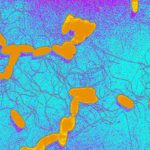Lien vers Pubmed [PMID] – 17259878
Pediatr. Infect. Dis. J. 2007 Feb;26(2):148-52
BACKGROUND: An increase of isolation of Salmonella Agona was observed in January through February 2005 among infants in France.
METHODS: Case-control study, food trace-back and microbiologic investigations were promptly carried out.
RESULTS: A total of 141 confirmed cases <12 months of age were identified. Most had diarrhea (99%; bloody 56%) and fever (75%) and 36% were hospitalized for 5 days on average and none died. In the case-control analysis, all 23 cases and none of the 23 controls had consumed powdered formula of brand A (P < 10(-5)). Active follow up of all cases showed that after the withdrawal of formula A, cases that had consumed formula A decreased rapidly, but new cases had consumed another formula (brand B). The trace-back found that 5 batches of formula B had been manufactured on the same production line as formula A. Forty-four cases were linked to formula A and 92 to formula B. All routine controls performed by the producers were negative for Salmonella. However, enhanced microbiologic investigations yielded S. Agona in one of 176 samples of formula A, in 4 of 27 tins of formula B consumed by cases and in 6 of 420 environmental swabs from the production line. All clinical, food and environmental isolates were of the same pulsed-field gel electrophoresis profile.
CONCLUSIONS: Powdered infant formulas are not sterile products and may contain low levels of Salmonella. Routine microbiologic controls are insufficient to detect a low-grade contamination, which may cause serious illness and outbreaks among infants.
